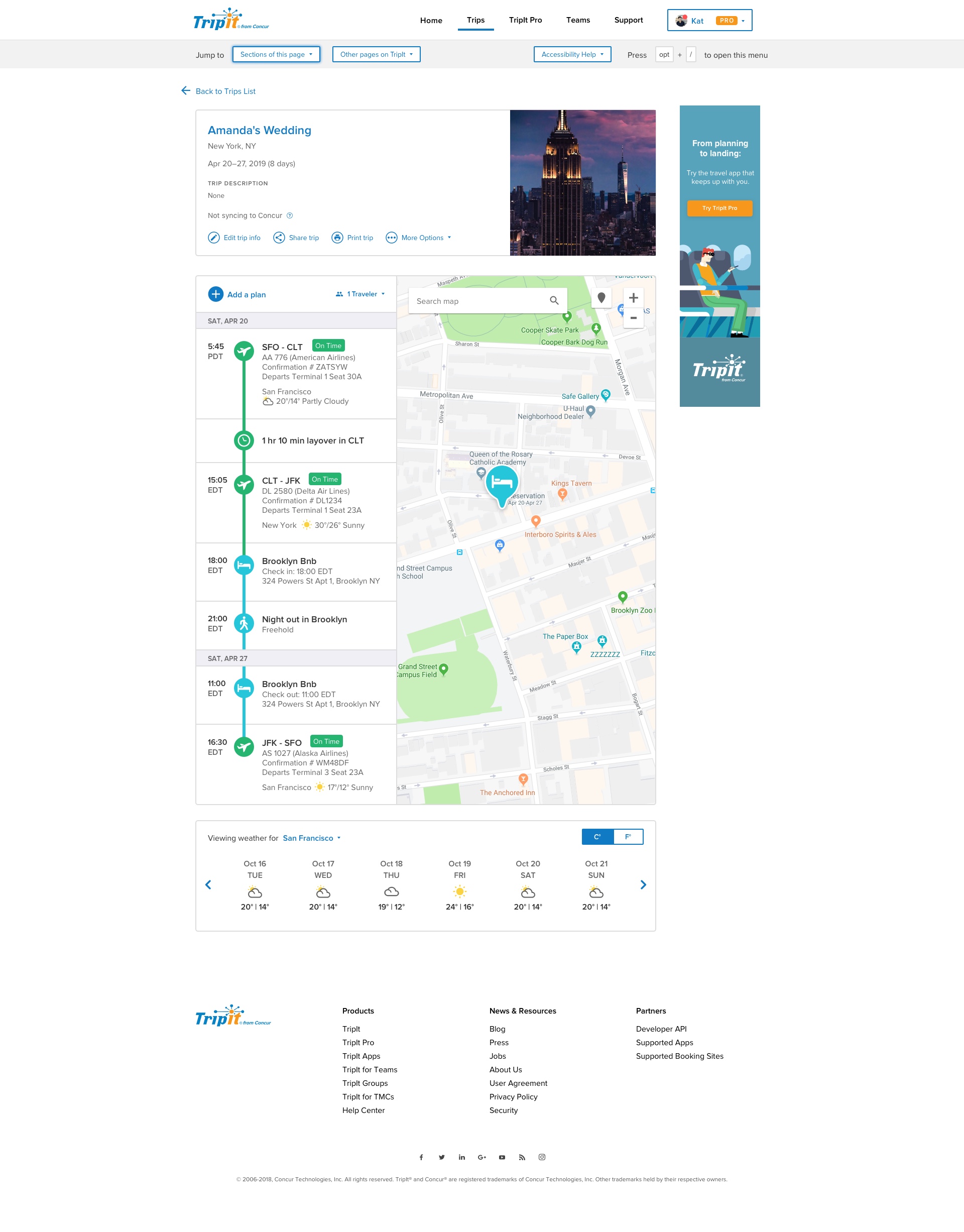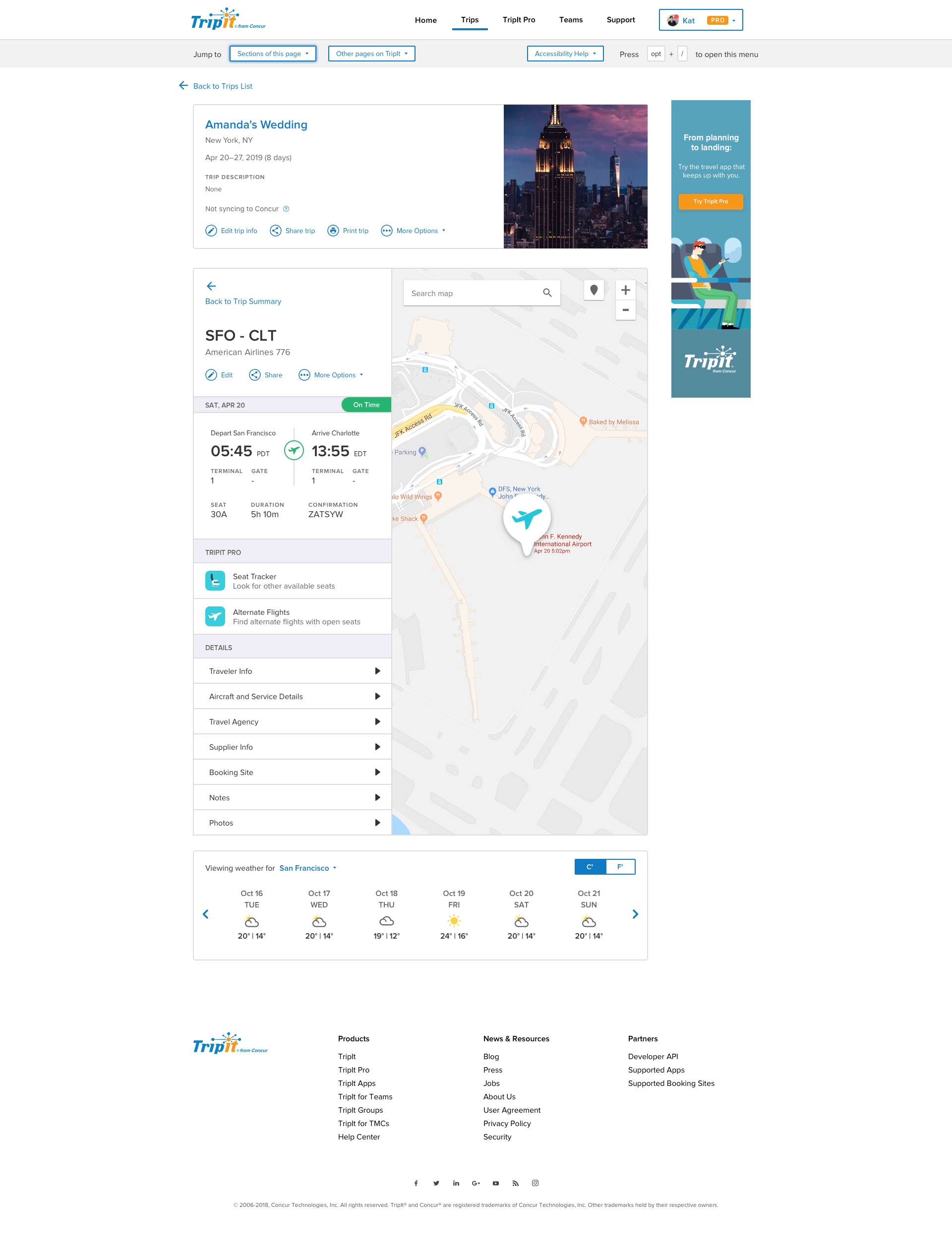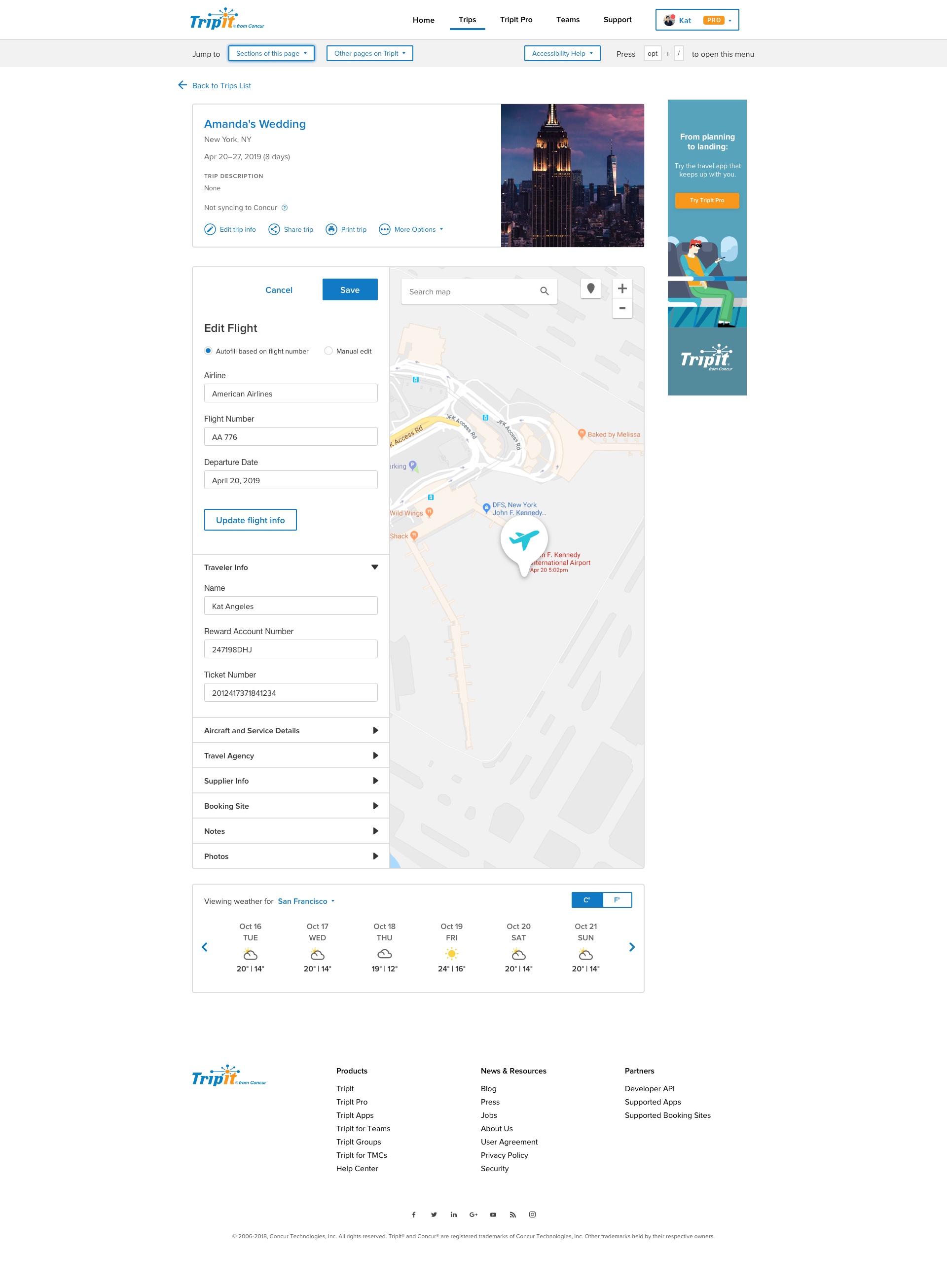Product design
TripIt Web Explorations
Create an optimal and modernized web itinerary experience for our travelers that is useful, efficient and aligned with their mobile experience.
Please take note that this project is currently underway and these designs are steps in a longer process as we seek to finalize the design.
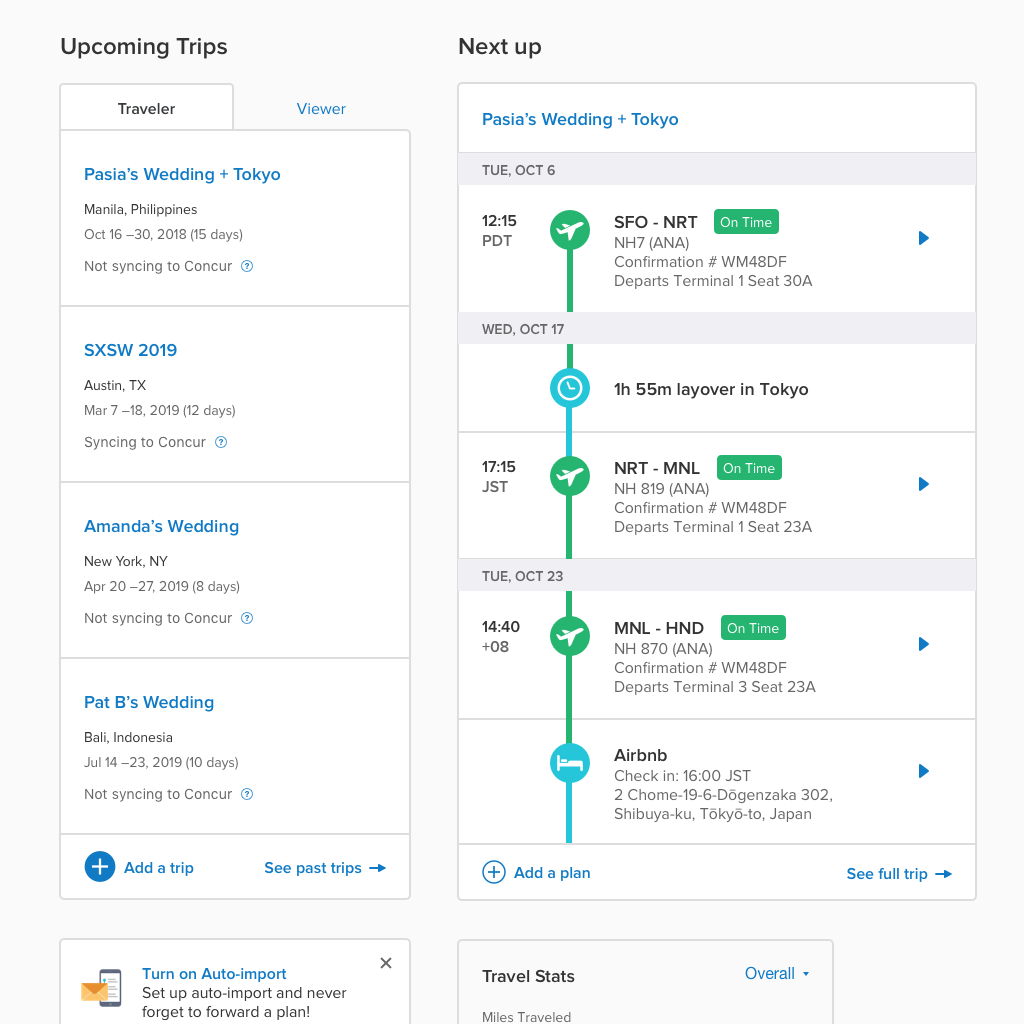
Defining the Problem: User Quote
“I love the mechanics of TripItPro and have been using it for many years. It syncs to my MacOS and iOS calendars beautifully. My frustration is the display online. Once I’ve entered all of the detailed info that I care about and plan on needing, the view of my trip continues to only be full fields (most of which I don’t usually use) and just lots of page clutter that’s of no value to me. I would LOVE a summary view that only displays the info that I’ve entered as important (or anything that you’d like to add, e.g., weather, delays, hotel announcements about closed pools, etc.). Other than that, I no longer need all of the fields and TripItPro structure on my trip’s page. If I print it then it’s better, but if I just want to go over my itinerary on the screen and see ALL info (much remains hidden now), and only the info for my trip, I currently don’t seem to be able to do so. Please advise if I’ve just been missing it all these years….. Thanks. Please redo everything by tomorrow! (just kidding)”
Current Design: Web

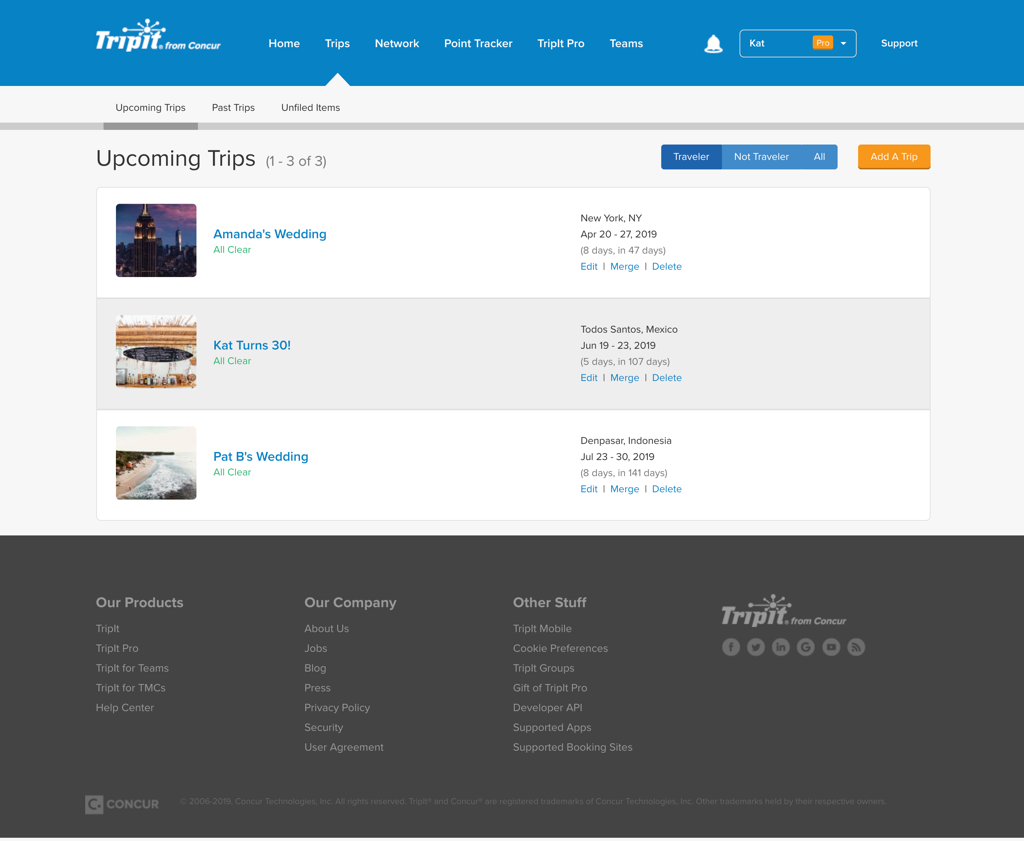
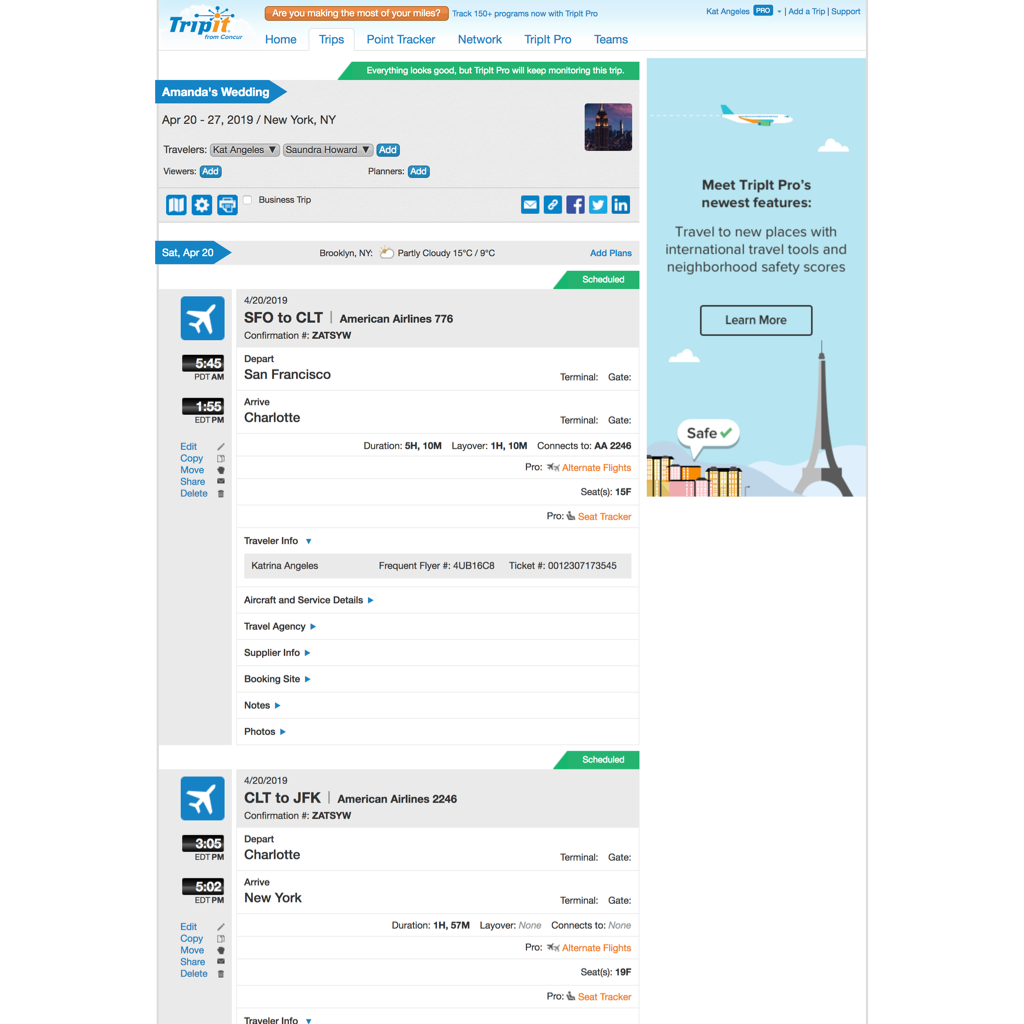
This is the primary flow, from the Signed-in Homepage, to Trip List, to Trip Show. The pages were all designed by different designers at different points in time and so the overall experience is by todays standards, disjointed and in some cases, heavily outdated and clunky.
Current Design: Mobile

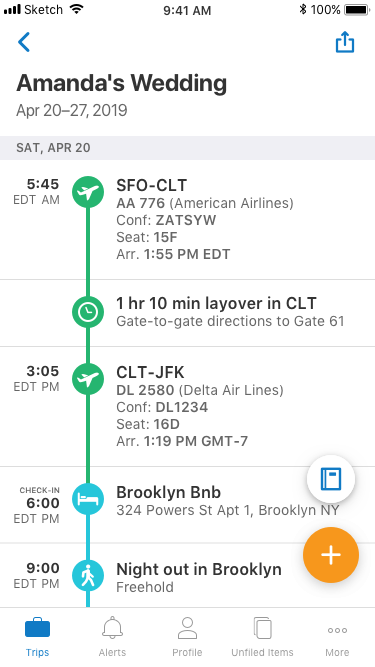
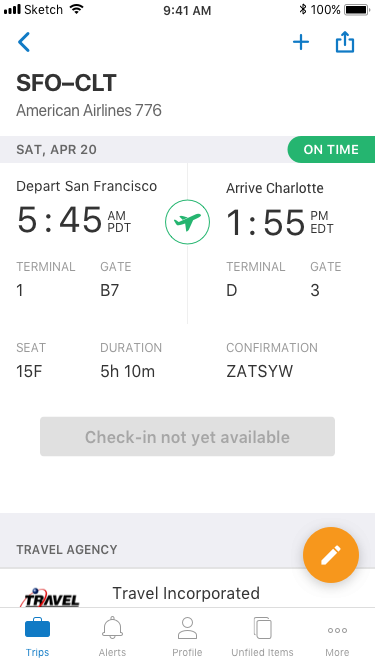
Research: Video Diaries
A collection of 6 travelers used the think-aloud method to show why they go to the web versus mobile and what they expect for a web experience. Users commented on what they’re doing, during what phase of the trip, what works/doesn’t work, and if they can find the actions for what they came to do.
Task: Add and Edit Trip
Users could not find the CTA to edit the trip wrapper because it was hidden within an unclear icon menu (the gear). Users could not quickly add plans to their trip because the CTA got lost due to lack of visual hierarchy to guide attention. The terminology around "trip" was unclear.
Task: Reviewing Plans
Participants could not easily scroll to get to certain plans by day for long trips.
Task: Add and Edit Plan
Participants had more fields than what they currently had information for and intended to input in one sitting. It was also difficult to decipher which actions were for the trip at large, or for the specific plan.









A few select tidbits of feedback
The Process

We experimented with out-of-the-box Bootstrap web components to see what we could get with the minimum amount of development time. This proved very possible but only for the signed-in homepage as the following pages proved they needed more than a visual makeover.
Quick mocks were put together to show a version of the Trip Show page integrating the mobile timeline and an additional user-research session was done using the task-based testing methodology.
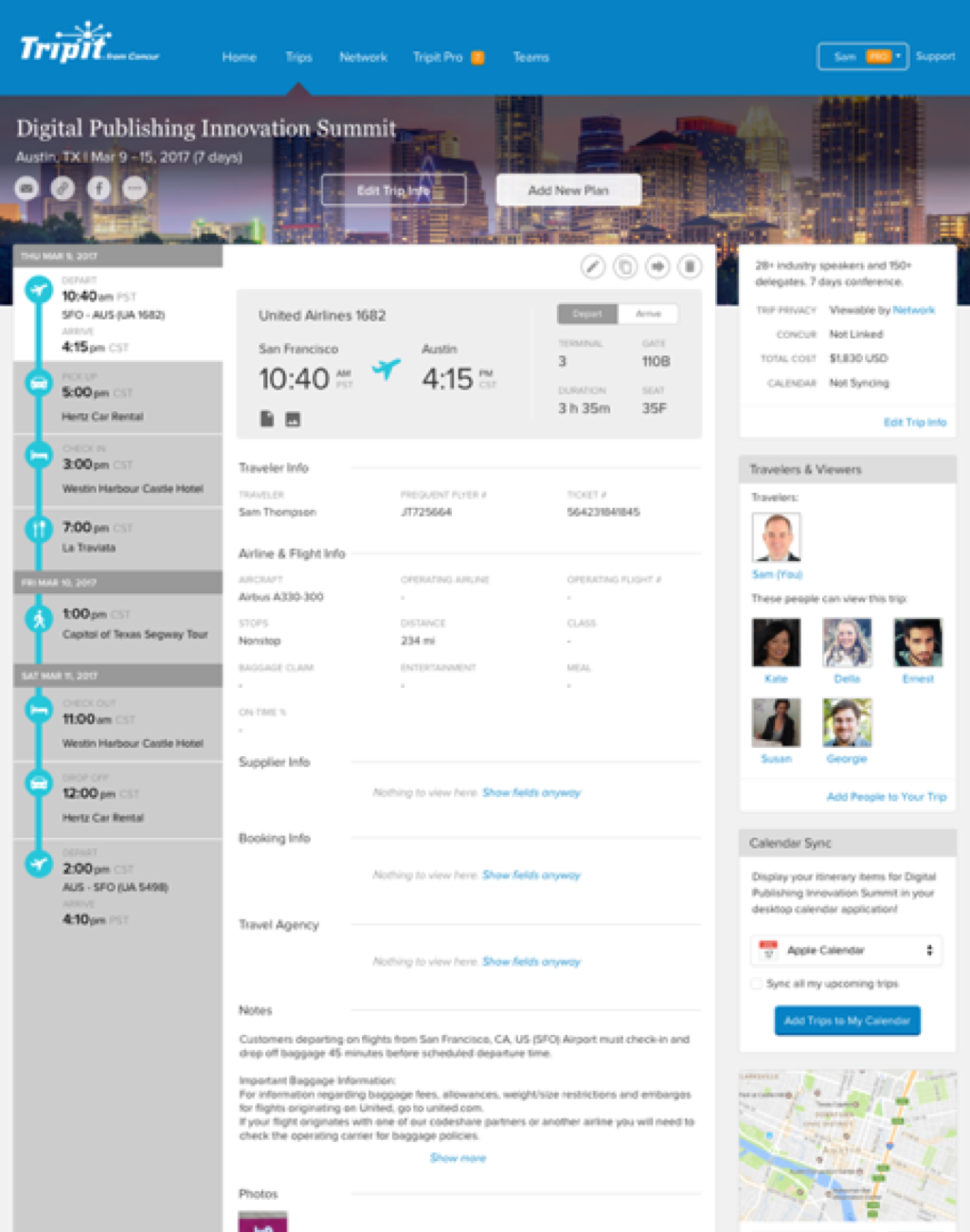
Iterate, iterate, iterate
With a good amount of research insights to go off of, we began to iterate on designs with the focus on the main page flows and with the intention of acquiring a design that was responsive, cohesive with the mobile app, more usable, accessible, and visually light and easy to digest. The designs would go through periodic rounds of review with designers, as well as larger stakeholders.
Signed-in Homepage
Being the most recently updated page, this was mostly a UI facelift, making color changes and incorporating iconography to create a more consistent feel with the mobile app.
* Introduced “?” (more info) icon to allow for short blurbs that can explain some TripIt terminology (e.g. Syncing to Concur)

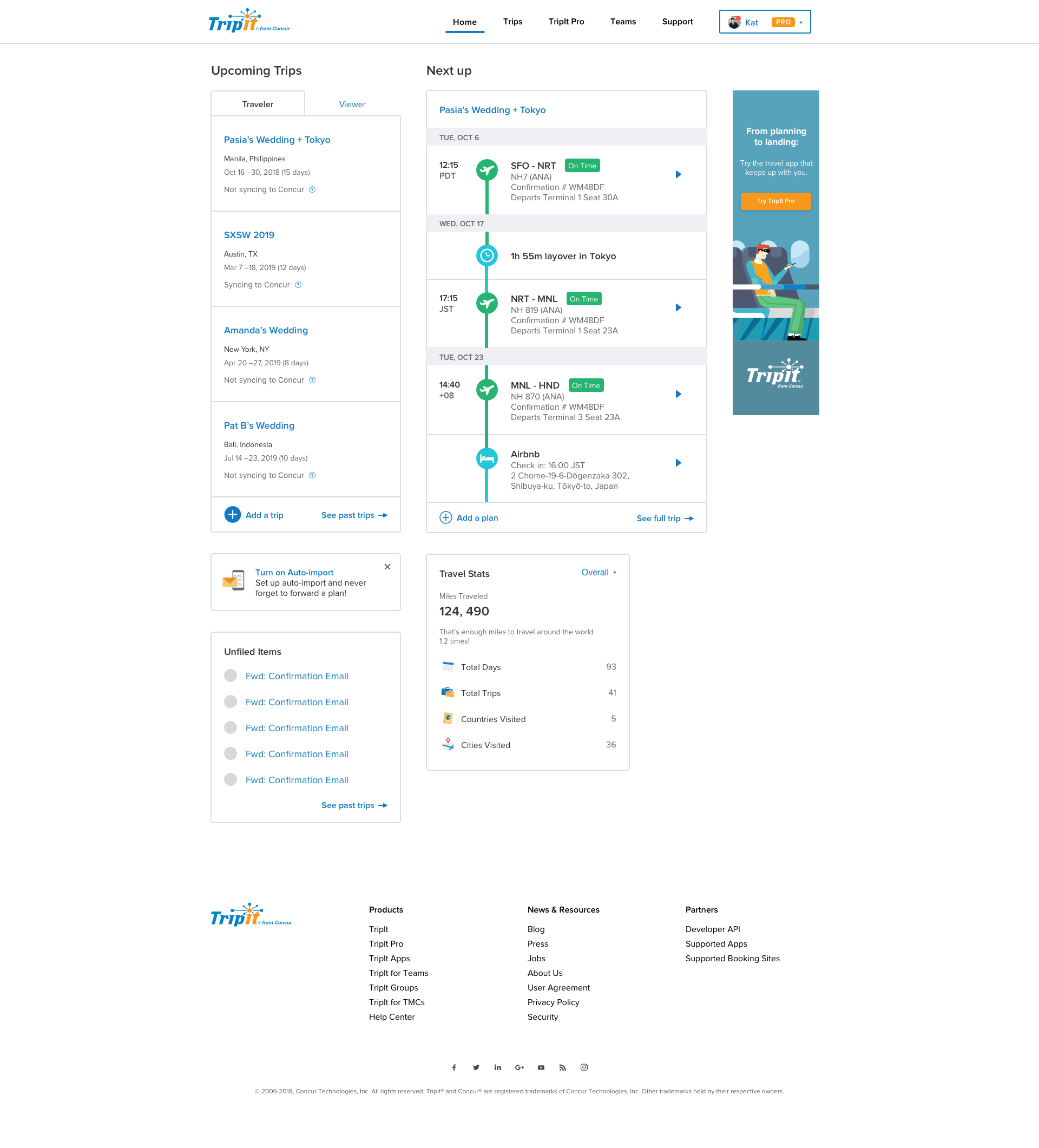
Trip List
- Created an expanded version of the trip cell from the previous page that we’re calling the “Trip Container” which will be a consistent element that may adjust slightly to context but will otherwise be consistent.
- Contained trip-level actions within the Trip Container to make action and content relations crystal clear
- Adjusted grouping of elements to place related components closer together
- e.g. the page counter and page view control
- Streamlined tab navigation to be fully trip-related
- Adjusted tab, filter, and button UI to make active and inactive states clearer

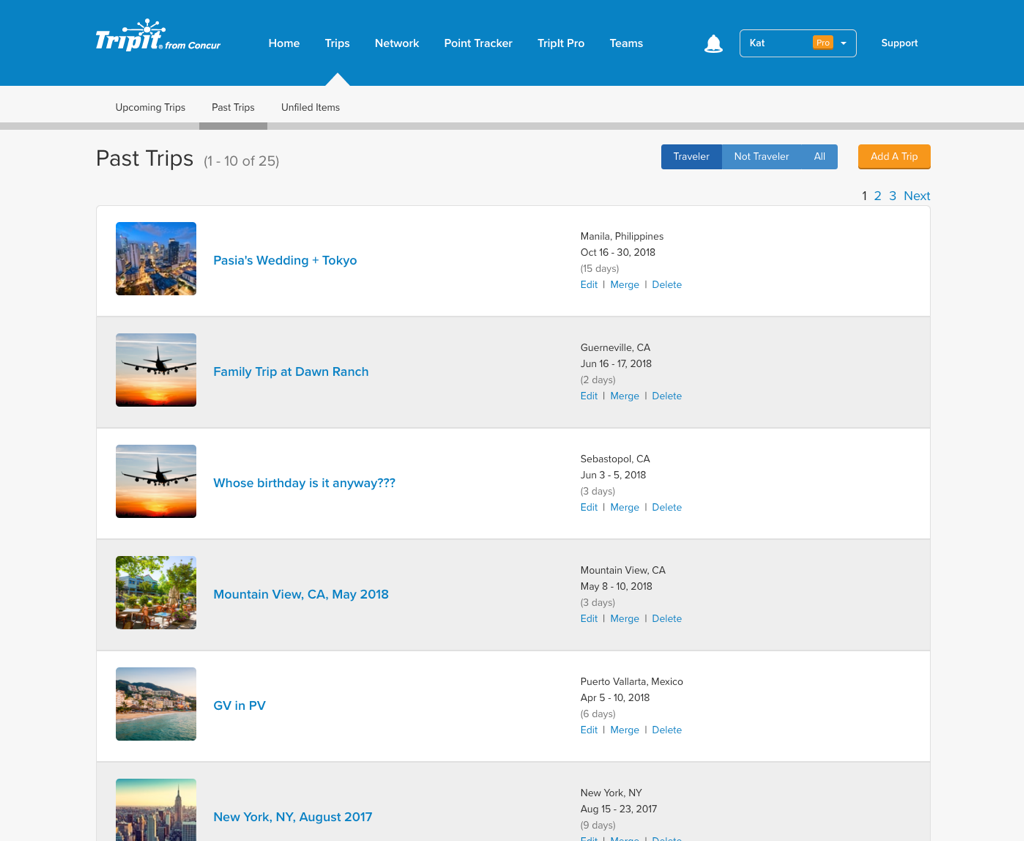

Trip Show Breakdown
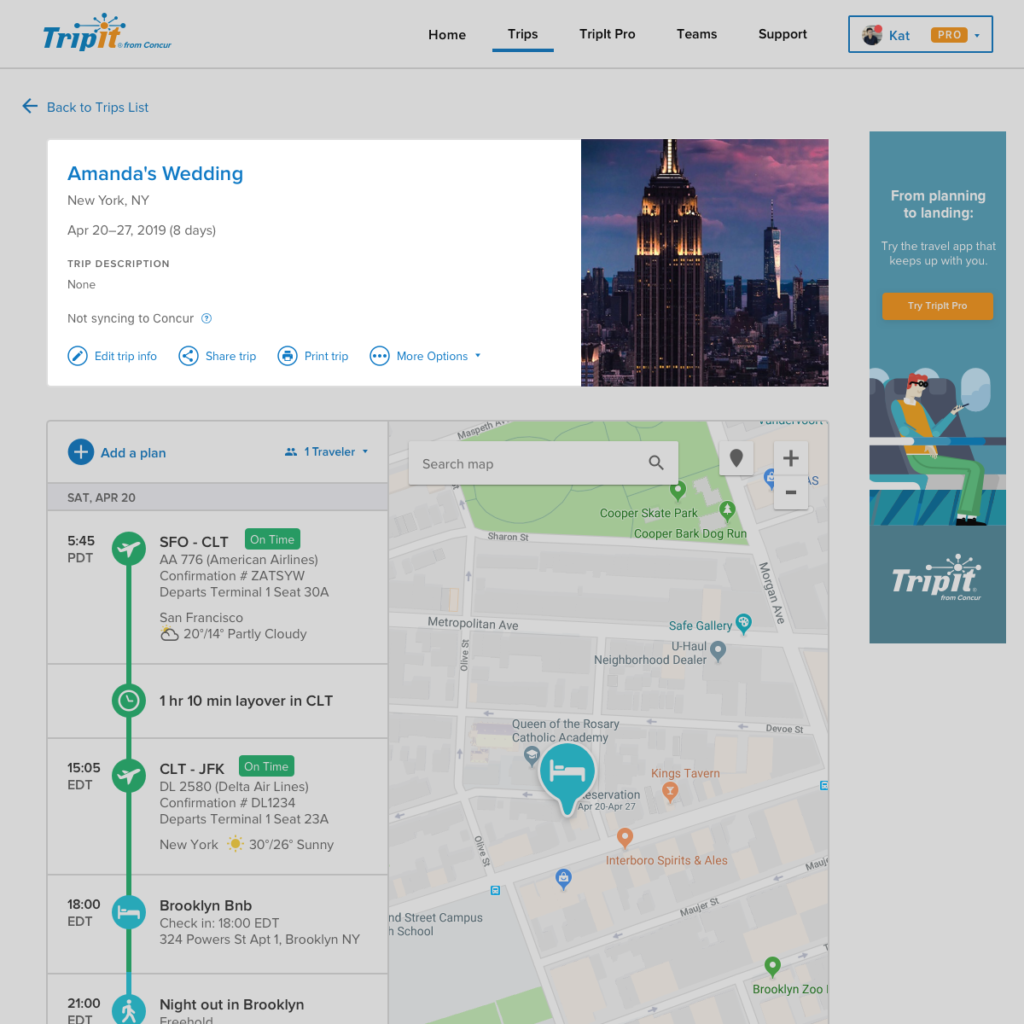
Used Trip Container to make trip-level info and plan-level info clearer
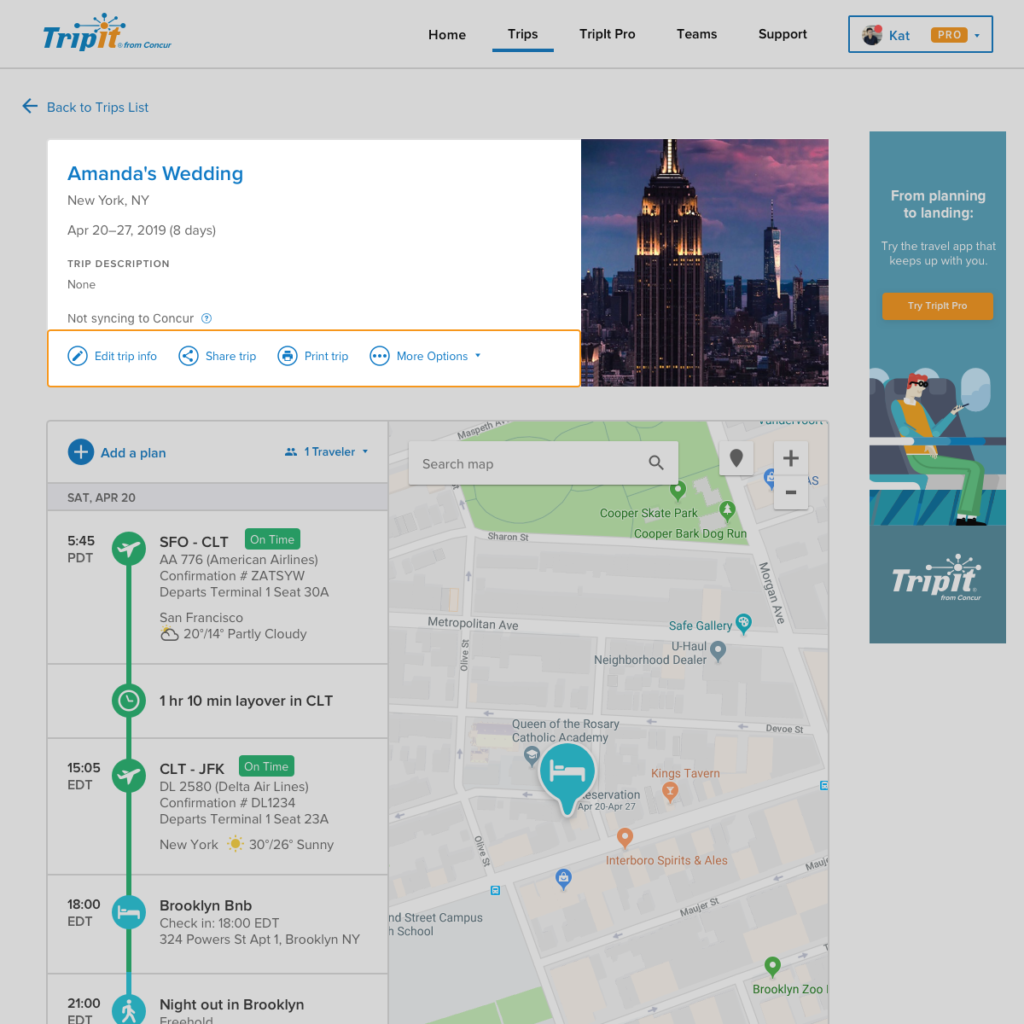
Made actions more descriptive to lessen ambiguity
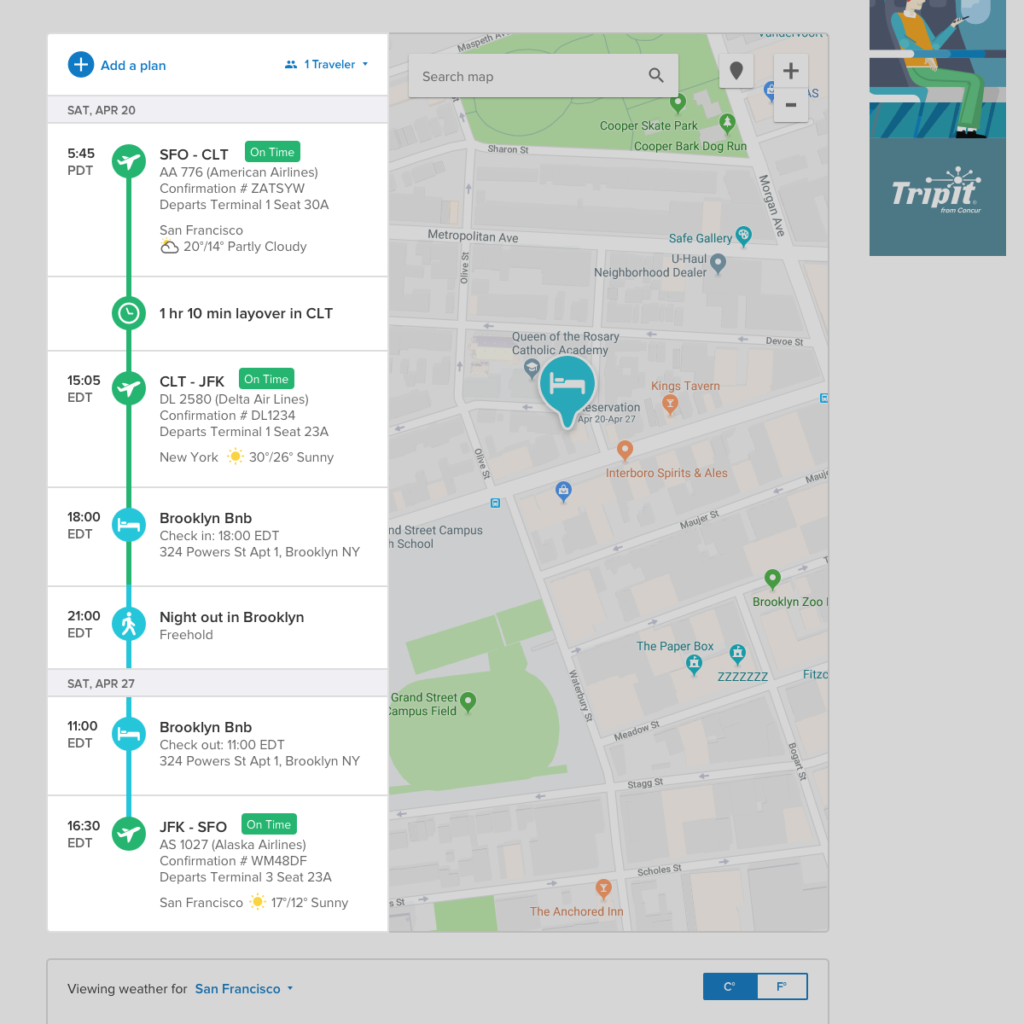
Incorporated timeline view from Mobile to create more consistency between platforms. The timeline has also consistently tested well as a visual representation of a traveler’s journey
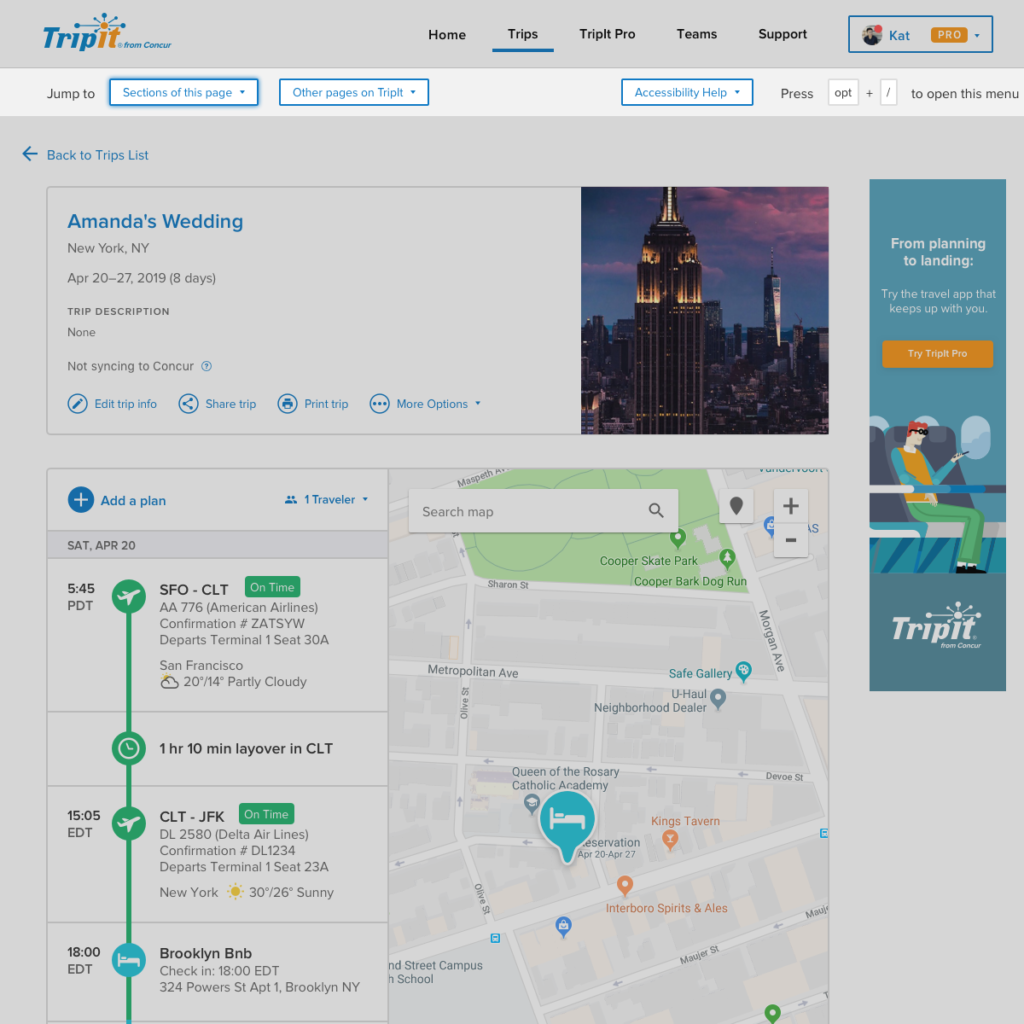
Added “Skip nav” control for users of assistive technology such as JAWS
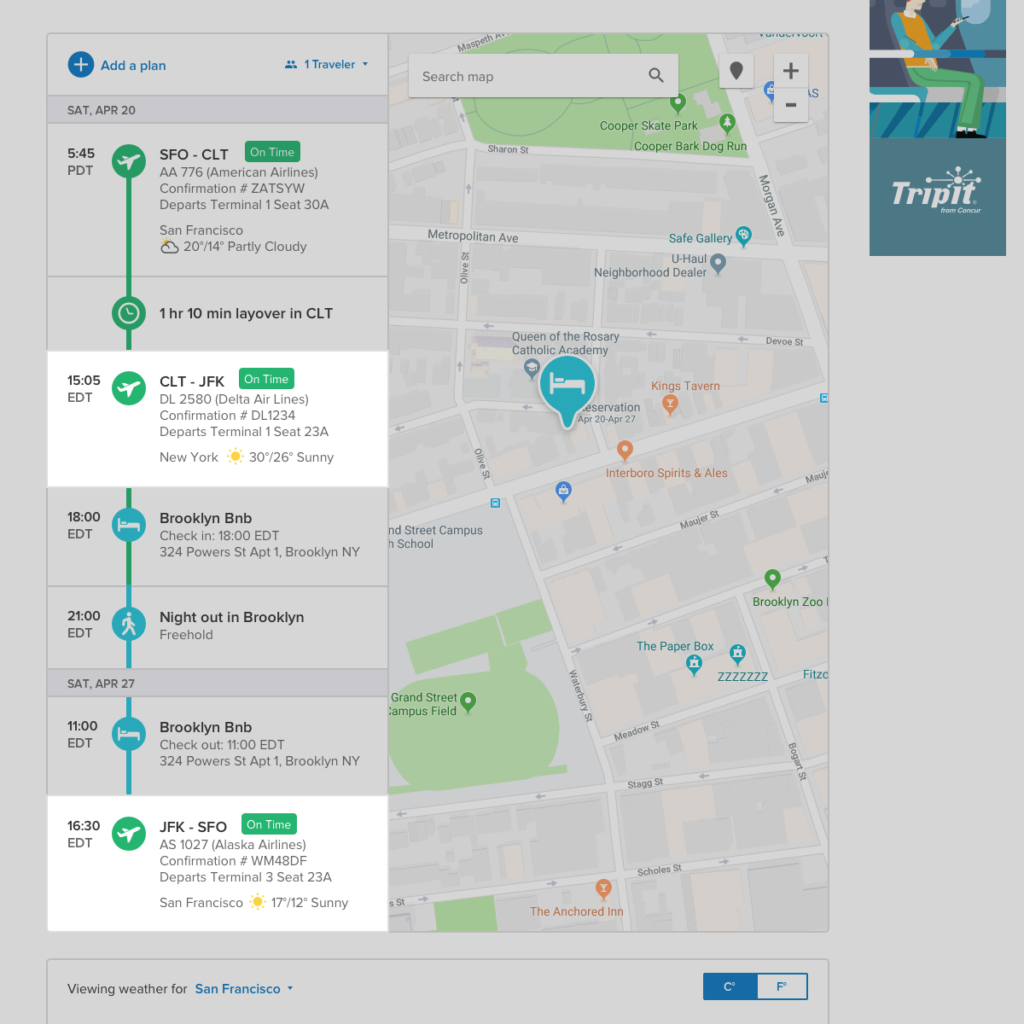
Made weather feature more contextual to raise value
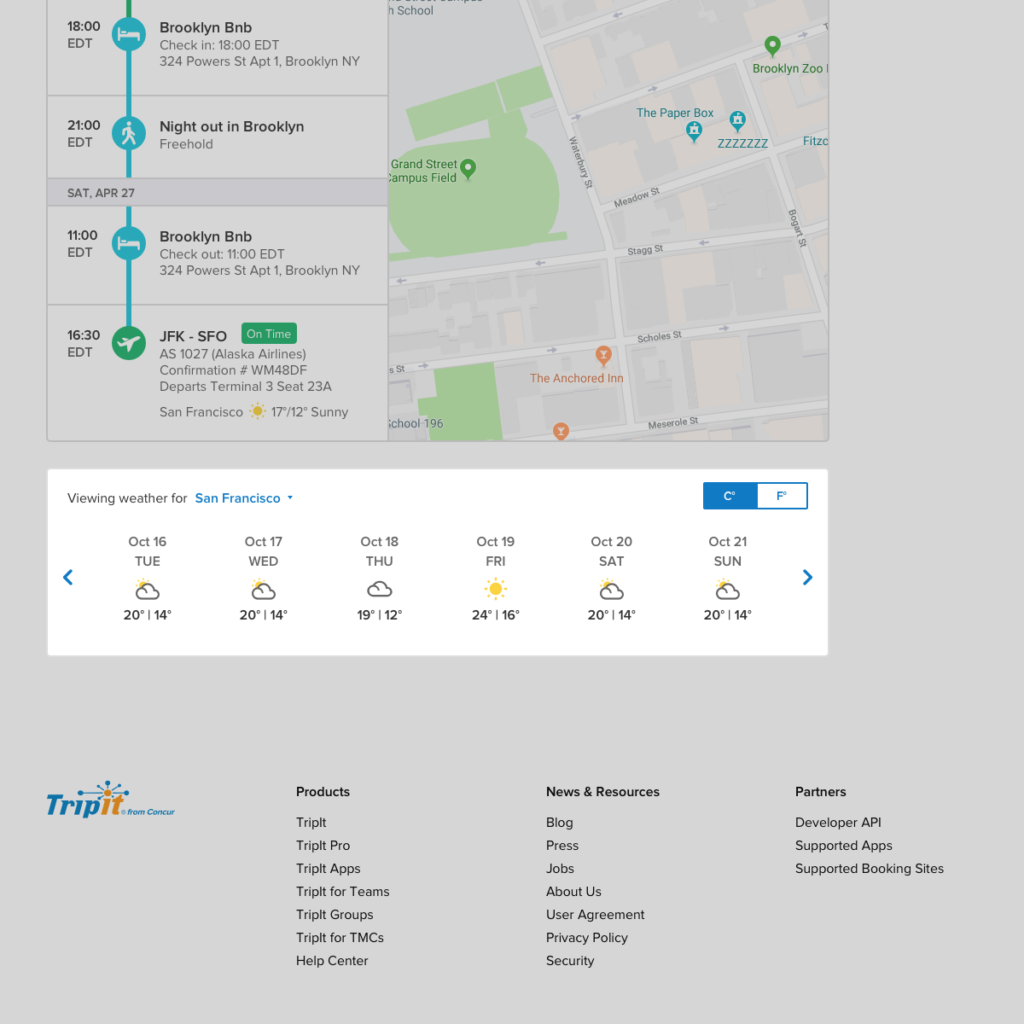
Added weather widget to allow users to easily find more specific weather info if desired
Trip Show In Summary
- Used Trip Container to make trip-level info and plan-level info clearer
- Incorporated timeline view from Mobile to create more consistency between platforms. The timeline has also consistently tested well as a visual representation of a traveler’s journey
- Put “More Info” categories like aircraft info and such under a deeper UI level to reduce clutter
- Made actions more descriptive to lessen ambiguity
- Made weather feature more contextual to raise value
- Added weather widget to allow users to easily find more specific weather info if desired
- Added “Skip nav” control for users of assistive technology such as JAWS
Questions Remain!
There is always more work to be done. The list goes on 🙂



